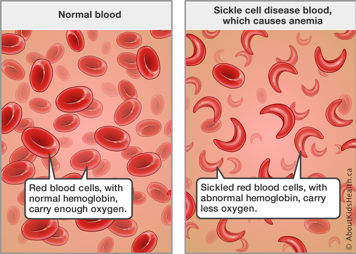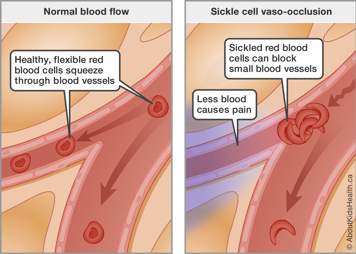Anemia
Most people with sickle cell disease have anemia. This is a condition where the blood cannot deliver enough oxygen around the body.
In someone with sickle cell disease, anemia occurs because their red blood cells:
- do not contain normal hemoglobin.
- do not last as long as regular blood cells. A normal red blood cell lives about three to four months, but a sickle cell usually survives for less than 20 days.
If your body cannot get enough oxygen for its needs, you may have fatigue, shortness of breath and poor concentration.

Pain
Pain can have many different causes. In people with sickle cell disease, the most common cause is the sickling (“curving”) of red blood cells.
When sickle cells can’t flow freely in a blood vessel, they become stuck. As a result, the area of the body supplied by that blood vessel does not get enough oxygen. The lack of oxygen can cause the affected part of the body to feel pain and become inflamed.

Sickle cell pain can happen anywhere in the body, but it is most common in the arms, legs, chest, back and abdomen.
For more information on pain, see What is pain?






